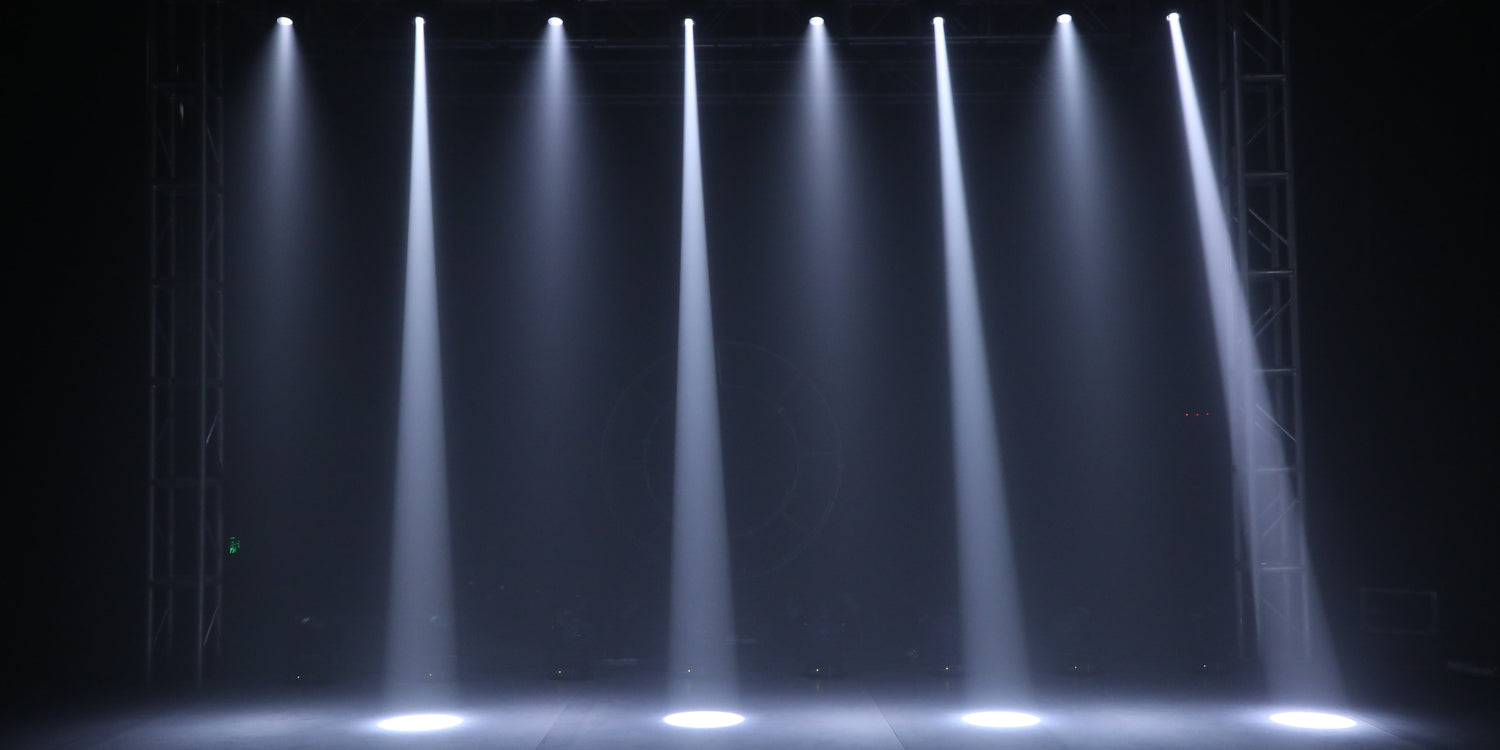Intro
Your stage lights are rated at 200 W — but somehow, they don’t look as bright as you expected.
You’re not alone. Many DJs, stage designers, and event planners fall into the same trap:
judging light performance purely by wattage.
In reality, wattage doesn’t equal brightness.
Three key technical factors determine how much light actually reaches your audience — and understanding them will help you choose smarter and create more impressive visual results.

1. Beam Angle & Lens Design
The first hidden factor is beam angle.
A narrow beam (5–10°) concentrates light into a tight, powerful shaft — perfect for aerial effects or long-throw beams.
A wider beam (25–40°) spreads the same light energy over a larger area, making it appear softer and dimmer.
What truly defines professional performance, however, is the lens structure.
Betopper’s fixtures feature an integrated convex optical lens — a one-piece design that focuses light more efficiently and minimizes diffusion.
Unlike traditional multi-part lenses, this structure improves optical precision, maintains beam uniformity and reduces luminous loss.
The result is a sharper, brighter beam with cleaner edges, ideal for DJs, stages and live productions that demand visual impact.
In real-world use, this integrated lens makes a visible difference on stage — stronger beams, clearer projection and more professional results.
Learn more about the Betopper LB150 Moving Head Light here:
https://betopperdj.com/products/betopper-150w-led-beam-moving-head-light
Pro Tip:
- For small venues, choose lights with narrow beams (under 10°).
- For wash lighting or background fills, go wider for smoother coverage.
2. LED Efficiency & Color Mixing
Not all LEDs are created equal.
Even with the same power rating, efficiency varies by chip quality, color rendering, and driver calibration.
When RGB or RGBW colors mix unevenly, you lose visible brightness.
A high-quality LED module maintains color balance and high CRI (Color Rendering Index), ensuring every hue — from deep red to pure white — stays vibrant and true.
Betopper’s fixtures use optimized high-efficiency LED modules designed for consistent brightness and smooth color blending.
This ensures richer tones, natural gradients, and a stronger overall visual punch on stage.
Did you know?
A well-calibrated RGBW system can deliver up to 30% higher visual brightness than a basic RGB-only fixture.
3. Power Stability & Heat Management
The third factor is one most buyers never think about: power and temperature.
LEDs that overheat quickly lose efficiency — brightness can drop by 10–20% after just 30 minutes of operation.
That’s why stable power drivers and proper cooling design are crucial.
Betopper fixtures use professional-grade power drivers and durable aluminum housings to maintain consistent brightness during extended operation — ensuring reliability for DJs, theaters, and touring events.
Pro Tip:
Always allow airflow around your lights. Good ventilation extends LED lifespan and keeps output stable over time.
Final Thoughts
Remember — brightness isn’t about wattage.
It’s about how efficiently your light converts power into visible output.
By understanding beam angle, optical lens design, LED efficiency and heat management, you’ll know exactly what to look for when upgrading your setup — and why Betopper’s fixtures consistently deliver brighter, sharper and more reliable results.
🎯 Ready to experience true brightness?
👉 Explore the full range at: https://betopperdj.com/




Laisser un commentaire
Tous les commentaires sont modérés avant d'être publiés.
Ce site est protégé par hCaptcha, et la Politique de confidentialité et les Conditions de service de hCaptcha s’appliquent.